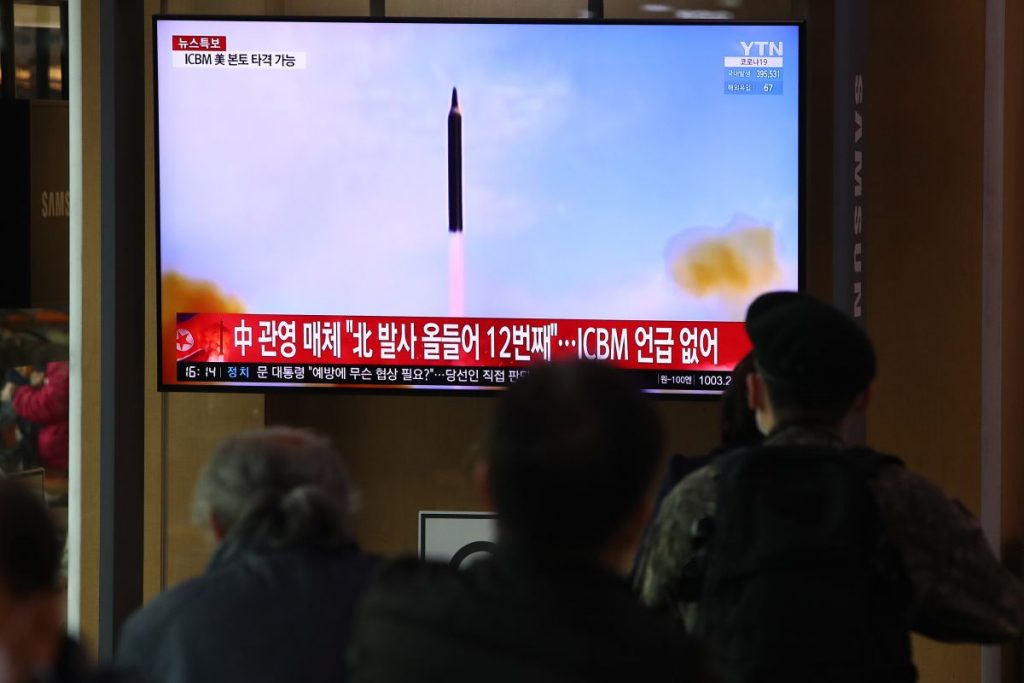
Did North Korea lie about its big ICBM test launch? (Image Credit: Space.com)
The first launch of North Korea’s powerful new intercontinental ballistic missile (ICBM) this spring apparently didn’t go well after all.
North Korea trumpeted that March 24 liftoff as the triumphant debut of the long-range Hwasong-17 ICBM, even releasing a much-mocked propaganda video (opens in new tab) that showcased the success, as well as dictator Kim Jong-un’s supposed central role in it.
But the missile that flew that day wasn’t the Hwasong-17, according to arms-control expert Jeffrey Lewis and his team at the Middlebury Institute of International Studies in Monterey, California. The researchers came to this conclusion after comparing North Korea’s propaganda imagery with photos snapped by satellites operated by the California-based company Planet.
Related: North Korea’s rocket and missile program (photos)
The propaganda footage shows a truck-mounted ICBM, apparently the Hwasong-17, on a country road. A Planet photo shows the same spot without the truck or ICBM but with a big burn mark — a telltale sign that a missile or rocket had launched recently, Lewis said on an episode of the Click Here podcast (opens in new tab) that posted Tuesday (Aug. 9).
But that Planet photo was taken on March 16, eight days before the purported Hwasong-17 success. And company imagery of the same site on March 24 shows no burn marks.
There are other problems with North Korea’s version of events as well. For example, the March 24 launch supposedly took place in the afternoon, but the position of the sun in the propaganda footage indicates a morning launch, the researchers found. And the ICBM in the North Korean video doesn’t accelerate as fast as the powerful Hwasong-17 should, according to the team’s models.
These various lines of evidence suggest that the new ICBM actually failed on its first flight, and that the propaganda video ropes in disparate footage to cover that up.
“The simplest answer is that they launched the big one on March 16. They filmed it; King Jong-un was there,” Lewis told Click Here host Dina Temple-Raston.
“But it blew up, so they couldn’t announce it,” added Lewis, a professor at the Middlebury Institute and director of its East Asia Nonproliferation Project. “So they came back a few days later. They launched a different missile that they were pretty sure would work.”
That second missile — possibly a Hwasong-15, which flew successfully in 2017 — did in fact work. Japanese authorities determined that it flew for 71 minutes, reached a maximum altitude of 3,700 miles (6,000 kilometers) and traveled 680 miles (1,100 km) from its launch site on March 24. We don’t know the location of that launch site, though the Planet imagery shows that it wasn’t the country road highlighted in the propaganda footage.
Two images — one released by North Korea, another taken on March 16 by @planet — leave little doubt that the video North Korea released of a “successful” launch of a new ICBM on March 24 was, in fact, from the failed launch a week earlier. https://t.co/CqmBMhPg11 pic.twitter.com/9obMDeJIyTAugust 9, 2022
Such deception is not exactly shocking. Kim is a secretive autocrat who runs a repressive regime, and he has lied to us before.
“My favorite thing that North Korea loves to lie about — which they’ve stopped doing, so I’m a little disappointed — but they always used to adjust the size of Kim Jong-un’s ears,” Lewis said.
“Apparently the man thinks his ears are too big. Or, at least he did,” he added. “We would just see image after image after image where they had made his ears a little bit smaller.”
Mike Wall is the author of “Out There (opens in new tab)” (Grand Central Publishing, 2018; illustrated by Karl Tate), a book about the search for alien life. Follow him on Twitter @michaeldwall (opens in new tab). Follow us on Twitter @Spacedotcom (opens in new tab) or on Facebook (opens in new tab).








